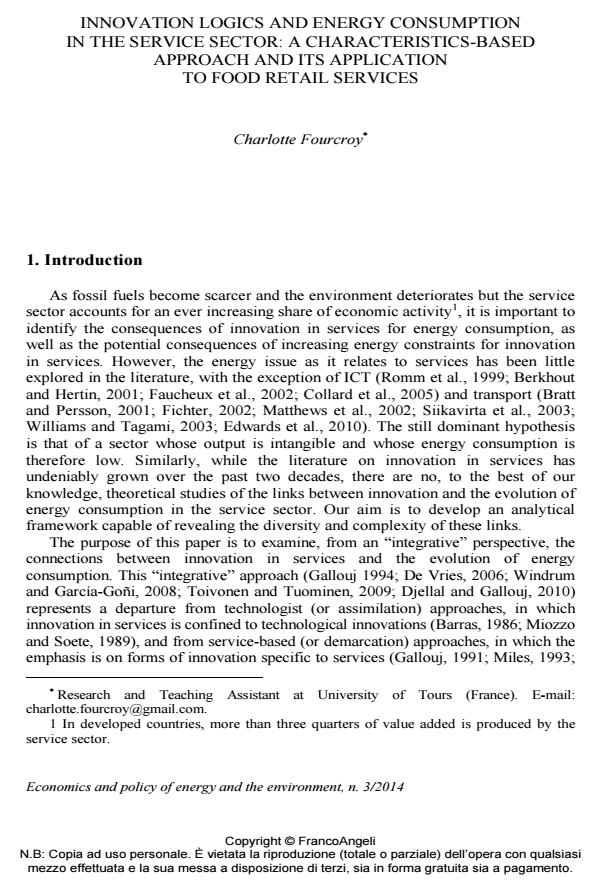Innovation logics and energy consumption in the service sector: a characteristics-based approach and its application to food retail services
Titolo Rivista ECONOMICS AND POLICY OF ENERGY AND THE ENVIRONMENT
Autori/Curatori Charlotte Fourcroy
Anno di pubblicazione 2015 Fascicolo 2014/3
Lingua Inglese Numero pagine 24 P. 115-138 Dimensione file 1376 KB
DOI 10.3280/EFE2014-003007
Il DOI è il codice a barre della proprietà intellettuale: per saperne di più
clicca qui
Qui sotto puoi vedere in anteprima la prima pagina di questo articolo.
Se questo articolo ti interessa, lo puoi acquistare (e scaricare in formato pdf) seguendo le facili indicazioni per acquistare il download credit. Acquista Download Credits per scaricare questo Articolo in formato PDF

FrancoAngeli è membro della Publishers International Linking Association, Inc (PILA)associazione indipendente e non profit per facilitare (attraverso i servizi tecnologici implementati da CrossRef.org) l’accesso degli studiosi ai contenuti digitali nelle pubblicazioni professionali e scientifiche
The contribution of services to wealth and job creation in contemporary economies continues to increase, as does their demand for energy. However, the energy issue as it relates to services has been little explored in the literature, with the exception of ICT and transport. The still dominant hypothesis is that of a sector whose output is intangible and whose energy consumption is therefore low. Similarly, while the literature on innovation in services has undeniably grown over the past two decades, the question of the relationship between innovation in services and the evolution of the demand for energy has been neglected. This article is devoted to an analysis of this relationship. The aim is to develop an analytical framework capable of identifying the consequences in terms of energy of different innovation logics in services. The framework is then applied to the case of food retailing.
Parole chiave:Service industries, service innovation, energy consumption
Jel codes:L80, L81, Q59
- Achieving Sustainable E-Commerce in Environmental, Social and Economic Dimensions by Taking Possible Trade-Offs Judit Oláh, Nicodemus Kitukutha, Hossam Haddad, Miklós Pakurár, Domicián Máté, József Popp, in Sustainability /2018 pp.89
DOI: 10.3390/su11010089
Charlotte Fourcroy, Innovation logics and energy consumption in the service sector: a characteristics-based approach and its application to food retail services in "ECONOMICS AND POLICY OF ENERGY AND THE ENVIRONMENT" 3/2014, pp 115-138, DOI: 10.3280/EFE2014-003007